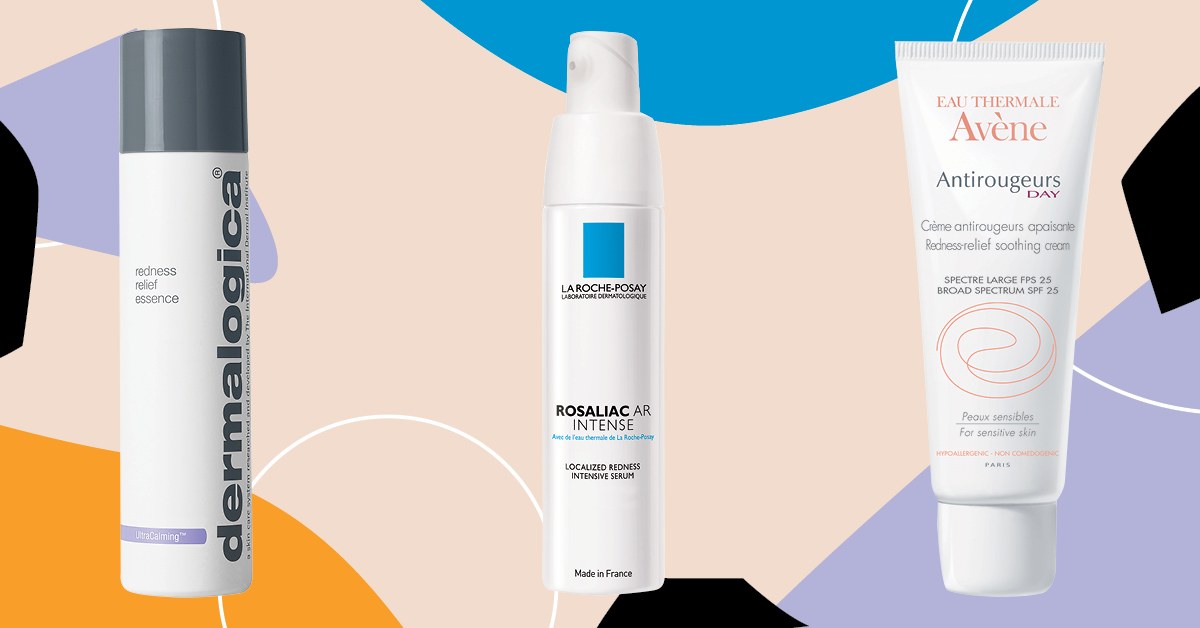9 Soothing Rosacea Treatments That Don't Require a Prescription

“Are you wearing blush?” is a question I’ve received since I was old enough to understand English. My answer has always been an automatic, “No, that’s just my face.”
As skin conditions go, I know that I can’t really complain about mine. I have a case of rosacea so mild that it passes for makeup most days. Exceptions occur only when I exercise, drink alcohol, eat spicy food, or overheat, which is when my face becomes noticeably more flushed. In these instances, the question typically changes to the somewhat less flattering, “Are you okay? Your face…” Still, I’ve never had a flare-up so extreme that it called for an urgent visit to a dermatologist. A regimen of products labeled “soothing” and “hydrating” is the only change I ever bothered making.
A recent meeting with dermatologist Dr. Timm Golueke alerted me that I might want to rethink that attitude. “You have rosacea,” he informed me mid-conversation (in the kindest way possible). I considered it a welcome reminder to start assembling a more tailored skin care routine.
A very important point to remember when it comes to rosacea is that the chronic condition gets worse over time. According to dermatologist Dr. Joshua Zeichner, it’s best to prevent progression in the earlier stages. “Rosacea is in your genes and while we cannot change our genetic make up, we can change the way that our genes are expressed,” he says. Dr. Golueke notes that a milder version will manifest as facial redness (although having facial redness doesn’t necessarily indicate that you have rosacea), while more aggressive versions cause pimple-like bumps on your cheeks and nose. Triggers include spicy foods, the sun, and irritating skin care ingredients (particularly retinols, exfoliants, and anything acid-based).
As for treatments, there are common prescription options that are both topical and oral. I’m currently using Soolantra on Dr. Golueke’s suggestion, which contains the active ingredient, ivermectin. Ivermectin helps reduce the level of mites living on your skin, which is increased (thereby causing inflammation) in those with rosacea. Your dermatologist may also prescribe Mirvaso or Rhofade, which constrict blood vessels in your face, reducing the appearance of redness for hours.
Then, there’s Oracea, a medication taken by mouth that reduces inflammation from the inside out. “While it’s technically considered an antibiotic, the dose is so low that it doesn’t kill any bacteria,” says Dr. Zeichner. “It really works as an anti-inflammatory treatment, and because of this, it can be taken for extended periods of time without the risk of bacterial resistance.”
In the realm of beauty tech, LED light therapy also scores points for reducing redness. This is an option celebrity esthetician Joanna Vargas often recommends. “It thickens your skin and helps eliminate that persistent redness,” she says. “LED light has been proven to increase the energy in living tissue, which is why it stimulates collagen production, reduces inflammation, and speeds healing.” In her practice, she often administers the treatment with her RevitaLight Bed.
While LED facials and derm appointments are highly recommended if you want to effectively treat your rosacea, they don’t cover everything else you do at home. So to make sure your top shelf is fully expert-approved, I asked the pros to also weigh in on effective over-the-counter products for rosacea. Below, an everyday routine that will keep your face cool and calm—no prescription needed.





